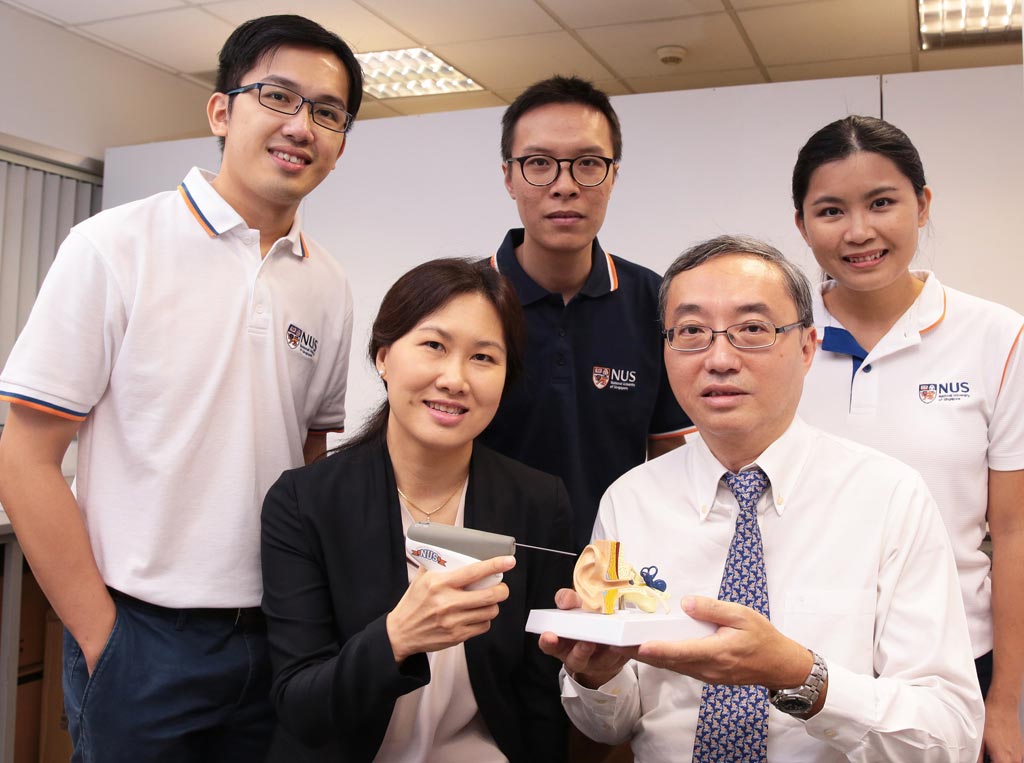Palm-Sized Device Facilitates Grommet Tube Placement
By HospiMedica International staff writers
Posted on 05 Jun 2017
A novel sensor-guided device that automates Grommet tube placement surgery significantly improves surgical treatment of Otitis Media with Effusion (OME).Posted on 05 Jun 2017
Developed by researchers at the National University of Singapore (NUS, Singapore), the pistol-shaped CLiKX device uses a sensor-controlled automation process to deliver the grommet tube into a patient’s ear quickly and safely, minimizing overall contact time with the patient’s eardrum and preventing over-deformation and excessive pressure, thereby reducing discomfort and trauma. To carry out the procedure, surgeons can potentially deploy a simple eye-loupe that does not require bulky surgical microscopes, using only moderate sedation or local anesthetic.

Image: NUS researchers with the handheld CLiKX device (Photo courtesy of NUS).
“The first line therapy for OME is usually the prescription of antibiotics and treatment of blocked ear tubes. But sometimes, the antibiotics may not be effective against OME,” said Lynne Lim, MD, of the NUS department of otolaryngology. “For patients with three or more episodes of OME within a year, especially if there is hearing loss and speech difficulties, some with craniofacial predispositions, or those who are concerned about building resistance to long term use of antibiotics, grommet tube placement surgery is currently the gold standard of care.”
“With this pistol-like applicator, the grommet tube can be easily inserted into a patient’s ear within a single click. In less than a second, the procedure is done,” added Professor Tan Kok Kiong, PhD, of the NUS department of electrical and computer engineering. “This simple procedure has the potential to be administered in a doctor’s consultation room under local anesthesia, or out of the operating theatre under intravenous conscious sedation without general anesthesia. Preoperative preparation and postoperative recovery time for patients are significantly reduced.”
OME is characterized by a non-purulent effusion of the middle ear that may be either mucoid or serous. Symptoms usually involve hearing loss or aural fullness but typically do not involve pain or fever. In general, inpatient care for OME is not required unless complications that threaten the stability of the patient's condition are suspected. A number of medical interventions besides grommets have been suggested for the treatment of OME, including pressure equalization tubes (PETs) and adenoidectomy.
Related Links
National University of Singapore














